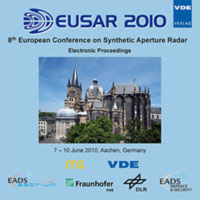Application of Freeman-Durden Decomposition to Polarimetric SAR Interferometry
Konferenz: EUSAR 2010 - 8th European Conference on Synthetic Aperture Radar
07.06.2010 - 10.06.2010 in Aachen, Germany
Tagungsband: EUSAR 2010
Seiten: 4Sprache: EnglischTyp: PDF
Persönliche VDE-Mitglieder erhalten auf diesen Artikel 10% Rabatt
Autoren:
Ballester-Berman, J. David; Lopez-Sanchez, Juan M. (Departament de Física, Eng. Sistemes i Teoria del Senyal (DFISTS), Universidad de Alicante, Spain)
Inhalt:
In this paper the formulation of the Freeman-Durden decomposition has been extended to PolInSAR data sets. The procedure assumes that the interferometric cross-correlation for the linear basis can be decomposed into the three mechanisms considered by the Freeman-Durden approach (i.e. direct, double-bounce and volume scattering mechanisms) even though any other decomposition could be used. In this case the retrieved parameters are defined with magnitude and phase, and hence the power contribution is estimated jointly with the phase center of the scattering mechanism. Therefore, the retrieved magnitudes are also associated with their corresponding interferometric phases which are related to the vertical locations and, actually, the results must be analyzed in terms of the VV and HH interferometric cross-correlations. Indoor and airborne data have been used for testing the procedure. When compared with the original Freeman-Durden decomposition for PolSAR data some new features have been identified in both datasets as a result of the incorporation of the interferometric information.


